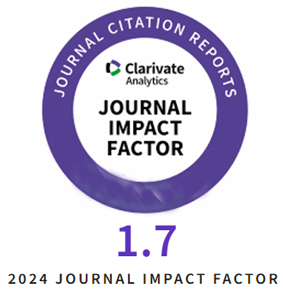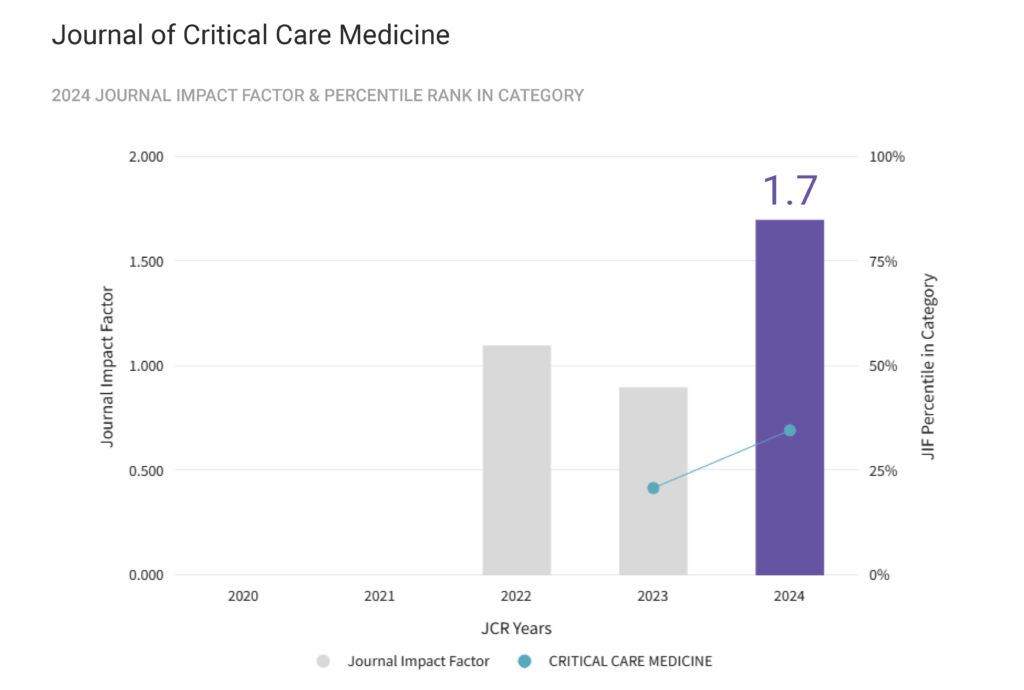Introduction: COVID-19 pneumonia manifests with a wide range of clinical symptoms, from minor flu-like signs to multi-organ failure. Chest computed tomography (CT) is the most effective imaging method for assessing the extent of the pulmonary lesions and correlates with disease severity. Increased workloads during the COVID-19 pandemic led to the development of various artificial intelligence tools to enable quicker diagnoses and quantitative evaluations of the lesions.
Aim of the study: This study aims to analyse the correlation between lung lesions identified on CT scans and the biological inflammatory markers assessed, to establish the survival rate among patients.
Methods: This retrospective study included 120 patients diagnosed with moderate to severe COVID-19 pneumonia who were admitted to the intensive care unit and the internal medicine department between September 2020 and October 2021. Each patient underwent a chest CT scan, which was subsequently analysed by two radiologists and an AI post-processing software. On the same day, blood was collected from the patients to determine inflammatory markers. The markers analysed in this study include the neutrophil-lymphocyte ratio (NLR), monocyte-lymphocyte ratio, platelet-lymphocyte ratio, systemic immune-inflammatory index, systemic inflammation response index, systemic inflammation index, and serum interleukin-6 value.
Results: There were strong and very strong correlations between the derived inflammatory markers, interleukin-6, and the CT severity scores obtained by the AI algorithm (r=0.851, p<0.001 in the case of NLR). Higher values of the inflammatory markers and high lung opacity scores correlated with a decreased survival rate. Crazy paving was also associated with an increased risk of mortality (OR=2.89, p=0.006).
Conclusions: AI-based chest CT analysis plays a crucial role in assessing patients with COVID-19 pneumonia. When combined with inflammatory markers, it provides a reliable and objective method for evaluating COVID-19 pneumonia, enhancing the accuracy of diagnosis.
Tag Archives: artificial intelligence
Artificial Intelligence: The Next Blockbuster Drug in Critical Care?
The realm of critical care medicine is always waiting for the game-changing innovation – that elusive breakthrough poised to dramatically transform practice and yield remarkable results. Various contenders have come and gone: surfactant therapy, synthetic colloids, drotrecogin alfa [1-3]. While some have been consigned to the annals of history, a select few, such as low-tidal-volume ventilation, have endured [4]. Others re-emerge time and again, hoping that they’ll have an evidence-based role somewhere. The level of excitement is not always correlated with the staying power of the innovation, and sometimes the hype can overshadow the reality. [More]
Using Machine Learning Techniques to Predict Hospital Admission at the Emergency Department
Introduction: One of the most important tasks in the Emergency Department (ED) is to promptly identify the patients who will benefit from hospital admission. Machine Learning (ML) techniques show promise as diagnostic aids in healthcare.
Aim of the study: Our objective was to find an algorithm using ML techniques to assist clinical decision-making in the emergency setting.
Material and methods: We assessed the following features seeking to investigate their performance in predicting hospital admission: serum levels of Urea, Creatinine, Lactate Dehydrogenase, Creatine Kinase, C-Reactive Protein, Complete Blood Count with differential, Activated Partial Thromboplastin Time, DDimer, International Normalized Ratio, age, gender, triage disposition to ED unit and ambulance utilization. A total of 3,204 ED visits were analyzed.
Results: The proposed algorithms generated models which demonstrated acceptable performance in predicting hospital admission of ED patients. The range of F-measure and ROC Area values of all eight evaluated algorithms were [0.679-0.708] and [0.734-0.774], respectively. The main advantages of this tool include easy access, availability, yes/no result, and low cost. The clinical implications of our approach might facilitate a shift from traditional clinical decision-making to a more sophisticated model.
Conclusions: Developing robust prognostic models with the utilization of common biomarkers is a project that might shape the future of emergency medicine. Our findings warrant confirmation with implementation in pragmatic ED trials.










